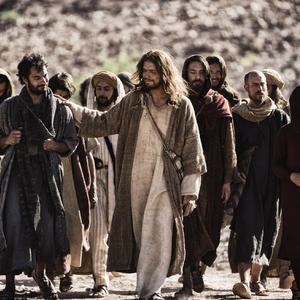The Traditional Church Vs. The NT Church
We have created a chart that lists differences from the New Testament Church and today's more Traditional Church.
|
The Traditional Church |
The New Testament Church |
|
1. The church meets in a special building |
Churches met primarily in homes. |
|
2. New converts are added to the existing church to make it bigger. |
When the number of believers outgrew a home, a new church was formed. |
|
3. The Christian church is fractured into hundreds of different denominations. |
There were no denominations; instead there was one church in each city, meeting in various homes. |
|
4. Pastors are trained in seminaries and sent out to serve in a congregation which has no real knowledge of his life or character. |
Elders were local brothers who arose from within a local church where their life and character were known. |
|
5. The Sunday "worship service" is characterized by passivity among the laity with the Pastor or a select group of leaders doing nearly all the ministry. |
Church meetings were participatory and interactive - every member had a function and contribution to make. |
|
6. The Sunday morning worship service is characterized by a rigid and inflexible order of service. |
Church meetings were characterized by informality, flexibility, and spontaneity. (Acts 20:7-12; 1Cor.14:26-31) |
|
7. The goal of the meeting is worship, listening to a sermon or evangelism. |
The goal of the meeting was mutual edification. |
|
8. The church is led by the Pastor (or Senior Pastor in a large church). |
The church was led by a plurality of co-equal Elders. |
|
9. The Senior Pastor is seen as set apart from and over the other pastors and elders. |
The church was cared for by a team of pastors who were accountable to each other and the church; they were also known as elders or overseers. No one elder functioned as the head of the church. (Acts 20:28; Titus 1:5-7; 1Pet.5:1-2) |
|
10. The Pastor is paid a salary by the church. |
Some elders might be financially supported, but they were usually bi-vocational |
|
11. The church is comprised of both clergy and laity. |
There was no clergy/laity distinction in the church - all the members comprised a fully functioning priesthood. |
|
12. The Lord's Supper is observed monthly, quarterly, or annually. |
The Lord's Supper was observed as often as the church regularly gathered and was the stated purpose for their meetings. |
|
13. The Lord's Supper is observed with a piece of cracker and a sip of juice. |
The Lord's Supper was observed as a full meal. |
|
14. The Lord's Supper is observed in a solemn funeral-like atmosphere as the worshippers reflect on Christ's sufferings and death. The believer's vertical relationship with Christ is emphasized. |
The Lord's Supper was observed with glad and sincere hearts as the church not only reflected on Christ's death, but also on the future marriage supper of the Lamb which it depicted. The believer's horizontal relationship with other believers was emphasized. |
|
15. A new believer must go through membership or instructional classes before he can be baptized. |
New believers were baptized as soon as it was humanly possible. |
|
16. Baptism is performed by the clergy. |
Baptism was performed by any Christian. |
|
17. The church must be present when someone is baptized.. |
The church was not always present when someone was baptized. |
|
18. Pastors deliver monologue sermons with no opportunity for questions or input from the congregation. |
Various brothers taught the church, and allowed the congregation the opportunity to question them and/or add their own insights. |
|
19. The church allocates the great majority of its finances for administrative overhead (salaries and building expenses). |
The church gave primarily to relieve the poor and assist Christian workers, often beyond their means; they had very little if any administrative expenses |
|
20. Believers are often urged to tithe; that is, they are taught to give a minimum of 10% to the church. |
Believers gave voluntarily as God had blessed them and they had purposed in their heart; tithing was not carried over into the NT church. |
By Brian Anderson
{mos_fb_discuss:5}
Написать комментарий
About the Site

All across the world, people are gathering in small groups to serve and worship God, be family, and encourage and affect each others lives. These gatherings are called by many names including simple church, organic church, and house church. Whatever you call it, the people involved value incarnational ministry to the lost, living radically for Jesus and each other, and are willing to get rid of anything that gets in the way of being fully devoted followers of Christ.
Detailed...
КомментарииComments (0)